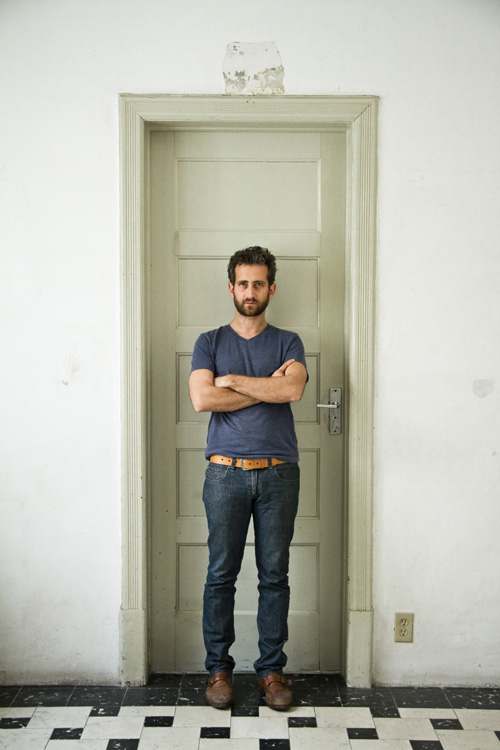Yoshua Okón came to prominence in the blossoming Mexico City art scene of the 1990s. In partnership with Miguel Calderón, another rising star of Mexican art, they founded La Panadería, an artist’s residency and gallery space in a four-story building and former bakery in the then newly fashionable neighborhood of Hipódromo Condesa. After the closure of La Panadería Okón continued his studies at UCLA’s graduate art program and eventually accepted a teaching position at UC San Diego. In 2011 he wowed critics with his installation “Octopus” for the Hammer wherein he asked immigrant day laborers to recreate the military maneuvers in which many of them had been trained in their home countries throughout Latin America, in the parking lot of the Cypress Park Home Depot.
Since returning to his native Mexico City he has wanted to reengage with a fixed space that could be open to the world and in 2009, SOMA Mexico was born. Says Okón, “It’s a nonprofit space which comes directly from the tradition of artist-run spaces. It also connects very much to the spaces that I used to be involved with. It also incorporates people that were part of the other artist-run spaces in the 1990s. Most of those spaces closed when the market started booming. And then we realized how important those spaces were.”
Okón and several other artists such as Francis Alÿs, Teresa Margolles, Mario Garcia Torres and Julieta Aranda set up an Artists Council and struggled to come up with a name for their living laboratory. “At some point it was an acronym. And then we kept voting for names. In the end, we decided to vote for SOMA. But not as an acronym, just as a word in itself. SOMA has many interpretations, Aldous Huxley takes SOMA from very ancient Indian literature. SOMA was a reference to either an altered state, like a state of hyper-perception or, some argue, that it’s an actual substance that used to be taken a long time ago. In the Greek root it’s the physical part of the body without the soul. As in “psychosomatic,” for instance. SOMA’s the flesh.”
The Artists Council created four different programs to engage the intersecting communities at SOMA. Okón explains, “One is an academic program which is set up like an MFA program in Studio Art. Another is called Wednesday SOMA, Miércoles de SOMA. It’s a public program with weekly series of talks. Unlike the academic program, which is very specialized in contemporary art, this one is multi-disciplinary. So every week there is somebody speaking there but it can be a philosopher, a writer, a scientist, an artist, etcetera. The idea is to have very horizontal and relaxed conversations where guests can speak in depth about what they do. Thirdly, we have a residency program that has the emphasis on interaction. The idea is to bring people from abroad that would come and interact with the local scene and community. So people that we invite for the residency teach in the academic program and give a public talk.” The fourth one, SOMA Summer, is a six-week summer course in English.
Okón is keen to point out that there is no individual studio space at SOMA and that this is by design. “We’re not interested in bringing people here to produce their own work. It’s more to bring people here to participate in our other programs, and to really deeply interact with the local scene.
“There are strictly no exhibitions happening at SOMA. That’s the last thing that we need,” Okón was quick to add. “We’d much rather have a conversation at SOMA about an exhibition that’s happening at the museum. The problem is that there are too many exhibitions already and nobody’s talking about them. So what’s the point? Like, why are you having so many exhibitions if they’re not having a long-term impact? Since the big explosion of the market, over 10 years ago, there is more and more emphasis on spectacle and less on content. We started losing the discursive side of art. This is a global phenomenon.”
SOMA is as committed to theory and a near meditative attitude toward art as it is to its community and a kind of deep localism that Okón feels is endangered. “Just having international careers, if locally you don’t have a strong community becomes very empty. It doesn’t make sense anymore. And that’s one of the things I’m liking a lot about Mexico City right now. It seems that there are enough people from abroad coming through the city, enough museums doing shows with international artists, but there are also more and more artist-oriented projects and community-based projects. I think when we talk about community and we talk about this scene, we definitely talk about a laboratory and an incubator in the sense that that is how culture gets generated. Culture does not get generated in isolation. Culture really gets generated in interaction.


